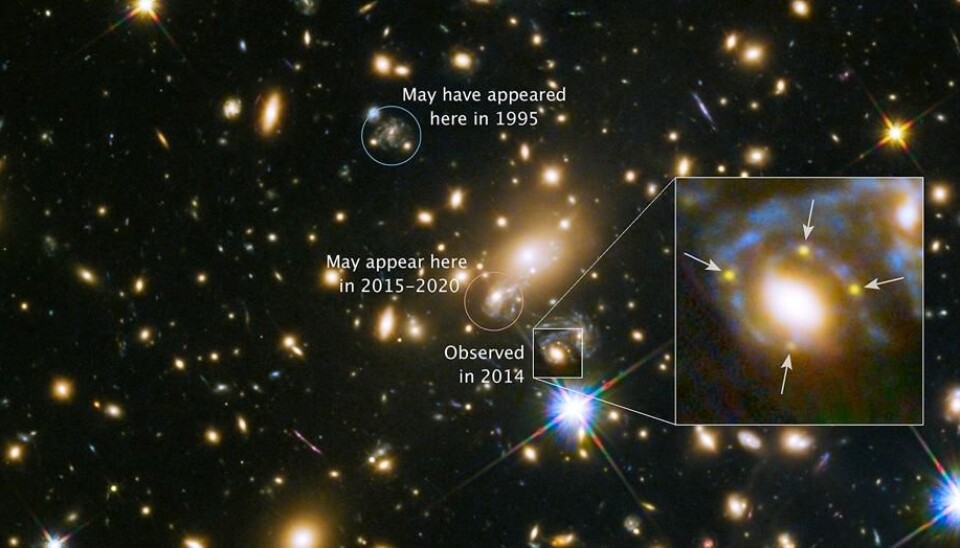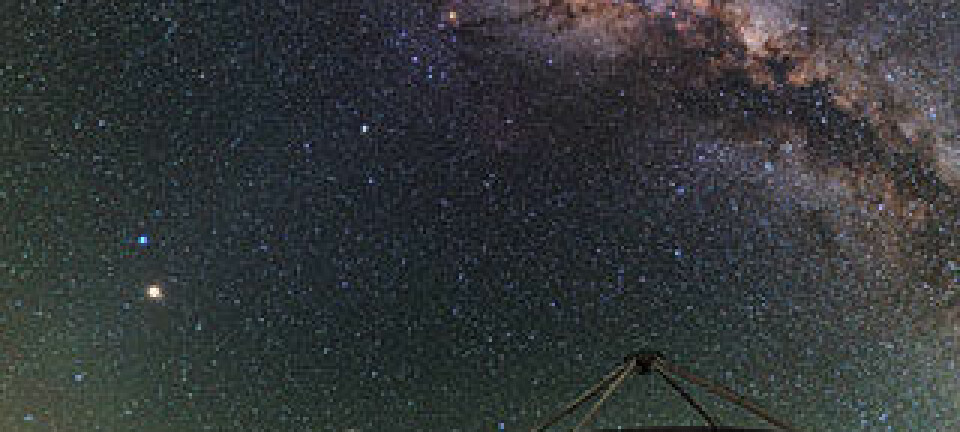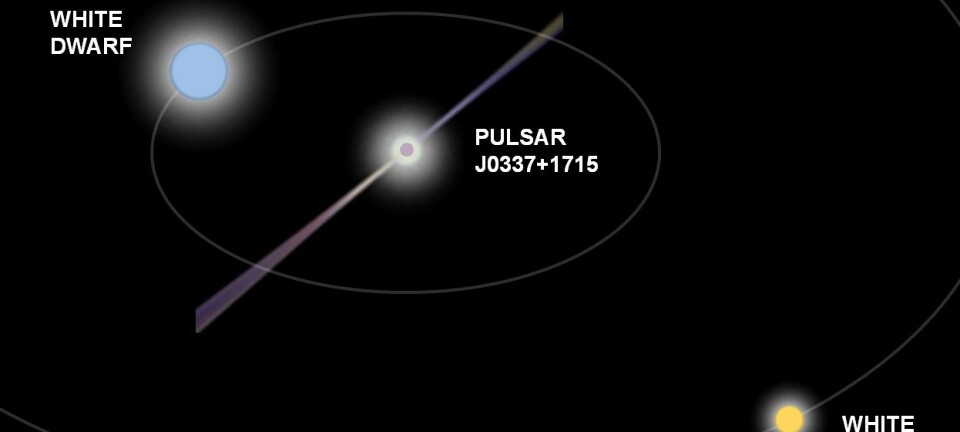
Scientists observe exploding star through extremely rare cosmic phenomenon
Supernova discovery confirms Einstein's predictions and can be used to calculate the distribution of dark matter.
For the first time ever, astrophysicists have observed the same light from a supernova in four different images thanks to a unique cosmic effect known as gravitational lensing.
Gravitational lensing occurs when two celestial bodies lie on a straight line in relation to the viewer on Earth. As a result, the light can be observed several times because it can take several possible routes to Earth -- and this is precisely what scientists have managed to capture images of.
Nobody has done this before now.
“Basically, we get to see the supernova four times and measure the time delays between its arrival in the different images, hopefully learning something about the supernova and the kind of star it exploded from, as well as about the gravitational lenses,” says postdoc Patrick Kelly, UC Berkeley, who discovered the supernova while looking through infrared images taken by the Hubble Space Telescope, in a press release. “That'll be neat.”
An excited Professor Jens Hjorth from the Niels Bohr Institute of the University of Copenhagen adds:
"Apart from the scientific significance of our discovery, it's also amazing to be involved in finding something so rare. We've been really, really lucky."
Hjort lead the Danish contingent behind the scientific article that has just been published in Science.
Can tell us a whole lot about dark matter
At Aarhus University, associate professor Maximilian Stritzinger of the Institute of Physics and Astronomy studies supernovas. He’s excited about the new discovery as well.
"The results are incredibly exciting because they confirm predictions by Einstein’s theory of gravity and provide a beautiful example of how studies of supernovas through gravitational lensing can be an important tool when it comes to understanding and containing the nature of dark matter," says Stritzinger.
And what gives the new discovery its most important perspective is precisely that it enables us better to understand dark matter.
"Dark matter remains one of the greatest mysteries. We don't know what it is, but we do know that it dominates the distribution of mass in the universe," says Stritzinger. "We can use this new study to tell us something about the distribution of mass in the galaxy, and this will help us to learn more about dark matter in general."
Dark matter predictions just around the corner
The scientists will now use the four images to calculate the distribution of dark matter.
They will be able to do so as each image contains a different rendition of the supernova's light -- that is to say: the light travelled to Earth along four different routes.
On each of the routes, the light has to move around different obstacles in the form of various types of matter around before it reaches us on Earth. Light always takes the most direct route around the obstacles.
The scientists know how much light there is, and are therefore able to estimate more or less how much matter there is in the galaxy cluster.
"It’s the distribution of mass that determines how the light travels through the dark matter in the cluster -- this enables us to do reverse calculations to find out how the matter is distributed and how it’s clustered," says Hjorth.
Theory to be tested in five years
And when the light from the supernova reveals itself again in a few years’ time -- that is what the scientists predict in their scientific article -- they will get a unique opportunity to test if the models they have created in the meantime are correct.
"We are counting on the supernova 'exploding' again -- to put it in simple terms -- within the next five years or so. In reality it will of course be the light from the same explosion we will see one more time," says Hjorth.
If this occurs at the time they expect it to, it means they have calculated the correct distribution of dark matter, he says. "Otherwise we'll have to check our theories again."
"We believe the dark matter has certain universal characteristics, and if we can learn something about this galaxy cluster we’ll be able to use that insight to achieve a general understanding of dark matter -- and ultimately better understand our origins," says Hjorth.
---------------
Read the original story in Danish on Videnskab.dk
Translated by: Hugh Matthews










